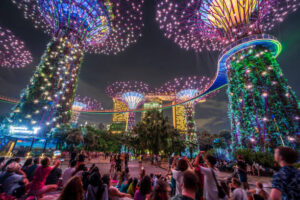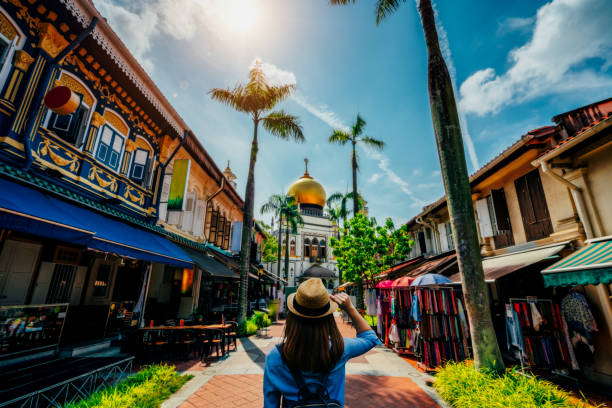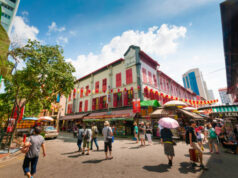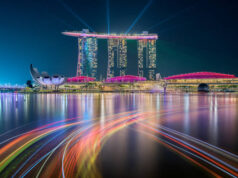Where Art and Architecture Meet
The exhibits are not the only thing about any modern art museum singapore experience. The two buildings are themselves rather like works of art. Steel, glass and concrete take sculptural shape, inviting you to take a glass back before you enter. The buildings in most of the cases precondition the experience by determining how you feel when you are inside the architecture. These museums show that it could be the container rather than the content that is inspiring.

Designs That Enhance Conversation
Light in a Storyteller
Other museums have access to natural light as their greatest medium. The layout of the gallery has skylights, sloping windows and mirrors to create changing patterns in the day. The morning sun could bring out the one corner of the sculpture, and the late afternoon glow could fill one whole room. Light makes its way into the exhibition, and it is full of life, changing all the time.
Mathematical Purpose Geometry
The sharp lines, elaborate curves, and adventurous overhangs are not all show. They curve through space conducting the eye and the body from one gallery to the other. It is less like being guided by a map to walk through these spaces and more like being guided by the building. The architecture is itself a narrative with a parallel to the artworks presented in it.
Communal Areas of the House
These museums tend to disorient inside/outside boundaries. The spacious courtyards, terraces, and open gardens located on the top encourage not only people interested in art but random travelers as well. The outcome is a cross between a cultural hub and a community space. Visitors mix with the architecture, linger and interact prior to entering the galleries.
Mixing Present and Past
Adaptive Reuse
Part of why some of Singapore’s modern art spaces are located in old buildings is because of the rich history of the buildings. Old civil buildings or colonial front towers are conceptualized with new extensions. Glass wings grow out of brick foundations. Stainless steel ramps link retained arches. This combination recognizes the past and reaches to the future, simultaneously reminding people that they can and must co-exist within the same roof.
Memory Processes in Materials
The material used may be significant. Crumbly, recycled wood, lumpy concrete, or gathering steel beams are not just refined looks: they carry narratives of eco-friendliness, more robustness, or factory background. Visitors do not only view art in the museum by stepping on its floor and the walls themselves.
That Seems Natural
Good museum design does not carry guests through a strict linear course. It is multi-layered in ways that encourage exploration. There are galleries that snake and spiral towards the heavens, and there are galleries that run on labyrinthine corridors. The viewers have the impression of exploration as they find new corners or unexpected views of more extensive installations.
Making the City
Windows and terraces are often used as frames, which make the city around the exhibition an additional exhibiting parameter. A gallery can open onto a view of skyscrapers, gardens or water. There is no isolation of the visitors into the building, but a connection is created with its surrounding landscape, where visitors can interact with it in a form of dialogue between architecture, art and nature.
Engineering an Art
Structural Daring
Most contemporary art museums in Singapore exhibit achievements of the engineers. Suspended bridges, cantilevered roofs and enormous spans of space free of columns feel like resistance to gravity. These risky plans are not just technically intricate, but they become events of their own that cannot be ignored whilst regarding the curatorial pieces.
Technology and Comfort
Architecture also inputs into account comfort here. The lighting, acoustics, and climatic controls are made a part of the design. These details go unseen by visitors, but they help create the experience–the noise level is under control, the temperatures are comfortable, and the artworks are secure.
Why Design Is Critical
Setting the Mood
Owing to the architecture, visitors feel something before they see even a single artwork. An arc-like roof is also spectacular. A small hall creates the suspense. A sunny atrium is a place of relaxation. These feelings determine the tone in which the people approach the exhibitions.
Art Above Walls
Buildings of museums in themselves become the cultural memory. Their memories are formed of how the sunset would be seen through glass windows, or of how the stairway wound or how the stairway twisted itself up like sculpture. All these images tend to withstand along with the art pieces they contain.
The Dilemmas of Daring Design
Marriage of Form and Function
There is a tendency to obscure the art because of the daring architecture that does not need any further decoration or explanation. The structure can be really beautiful, but workations can cause problems for curators requiring movable space. The finest designs are always somewhere right in the middle: they must appeal to the eye, but they should also be flexible enough to cater to the art in them.
Maintenance Matters
Glazing facades and composite construction need 24 hours of maintenance. Weather, humidity and heavy overload of visitors do their damage. The maintenance of the buildings looks invisible, but behind the glamour of the buildings hides hard work to ensure that they are safe, clean, and welcoming.
Looking Forward
In Singapore, the art museums are ever-changing and furthering architectural limits with each added new project. They are a form of cultural lighthouse, with aggressive design and careful utilitarianism. Their designs take us back to the traditional thinking that art does not start at the gallery entrance–it starts outside the building where one looks at the first view.
When one visits a contemporary art museum in Singapore, they experience this twofold. Internally, exhibitions create new ways of looking and encourage conversations. Beyond that, the very building itself is inspirational, demonstrating that the creative process is not limited in its expression to a framed canvas or a piece of sculpture itself but is just as much a part of the very walls that surround it.










